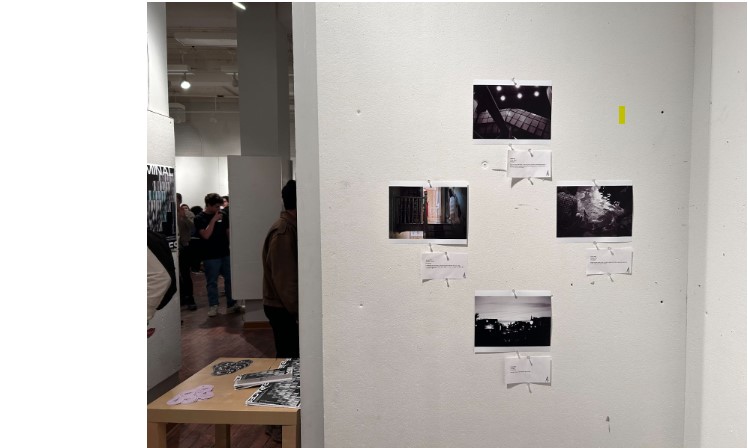On Monday, Jan. 22, the McGill Fine Arts Commission (FAC) held its first art exhibition of the year in the MacDonald Harrington exhibition room. The theme was liminal spaces, places of transition or change, expressed in varying forms. According to FAC’s VP Design, Emma Létourneau (U3 Arts), the FAC team selected this theme due to their curiosity about artists’ journeys, havens, and thresholds. They hoped this theme would provide space for artists’ creative expression while also challenging them to reflect on the various ways this idea could be presented.
The FAC is an organization on campus that supports and promotes fine arts at McGill. They also organize various events like exhibitions and workshops. As McGill does not offer any fine arts courses, students must find outlets for their artistic pursuits on their own time.
“The FAC’s overall goal is to provide the McGill community with opportunities to engage with art, whether it be by making art, or simply appreciating it,” Létourneau said in an interview with The Tribune.
Reflecting on their concept, I could see how someone could easily feel lost, staring at a blank canvas or empty photo albums, but nineteen artists found enough inspiration to contribute to the exhibition. Some students presented existing work, others made bespoke pieces for this event, and everyone brought a unique perspective to the theme. Subtle jazz music performed by Felix Hartley (U3 Music) on bass, Yuanlong Jiang (U2 Music) on tenor sax, and Gabe Newman (U1 Music) on guitar accompanied the viewing experience. This added yet another layer of artistic expression, contributing to the intimate and sophisticated atmosphere.
While all of the works were impressive, four collections and pieces with distinct media stood out for their versatile representations of the theme. Marianne Chen-Ouellet’s (U3 Arts) multi-media collection depicted the liminality of the creative process and the hesitation of how to best represent it. The collection featured photo-copied images, coloured pencil drawings, paintings, and zine booklets.
Charles Cant (U0 Arts) submitted a pair of oil paintings entitled Bedsheets, depicting people on beds. The artist said they were hoping to express a liminal emotional state rather than a physical one. When I asked attendees about their favourite pieces, many cited either Chen-Ouellet’s or Cant’s work.
I found the photography pieces particularly captivating, as they allowed artists to capture fleeting real-world moments in time. Samti Luk’s (U3 Science) photography collection, Gloria’s Motel, Trans-Canada Highway, focuses on an abandoned motel. The artist describes the building, gradually succumbing to the elements, symbolizing the transitional space between humanity and nature.
Coco Jie Wang (U3 Arts) sculpted a piece called Hua, which means flower in Mandarin. I could hardly get a good look at it because of the large crowd inspecting the clay figure. Wang crafted a human torso with dried flowers emerging from its chest, noting that liminal spaces evoke memories of elements that were once familiar but have since changed, much like human bodies.
When I stepped into the room, I saw the faces of people who came to support their friends’ art, as well as others who had simply wandered in. This type of community engagement is a major part of FAC’s mission, and I loved seeing students’ art appreciated by so many. Art can be an especially beneficial break from studying and, with collective support, can be financially accessible to see or make.
“We can really see we are answering a need by seeing the turnout,” Létourneau said, referring to the more than 250 attendees at Liminal Spaces.
FAC’s next exhibition is slated for 2024









